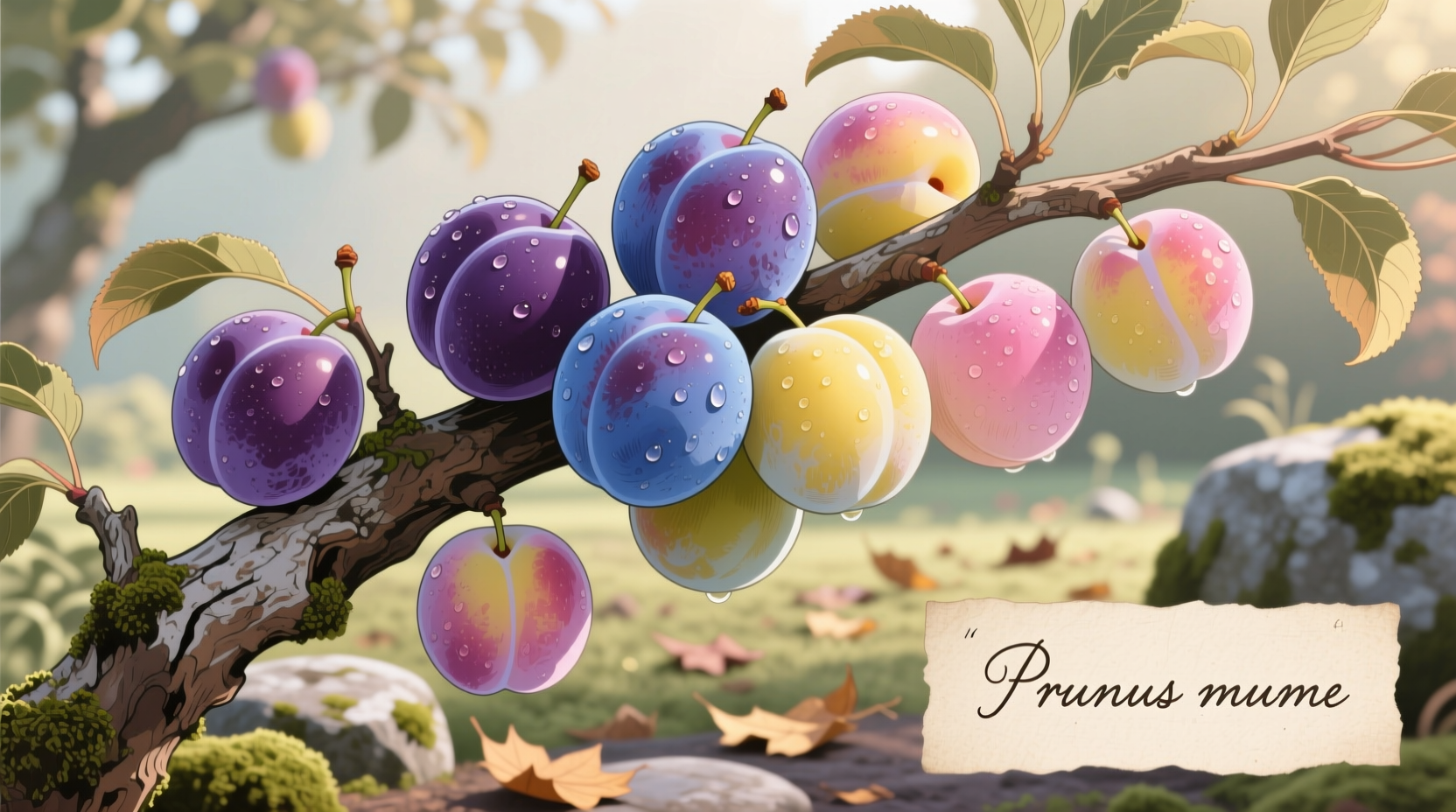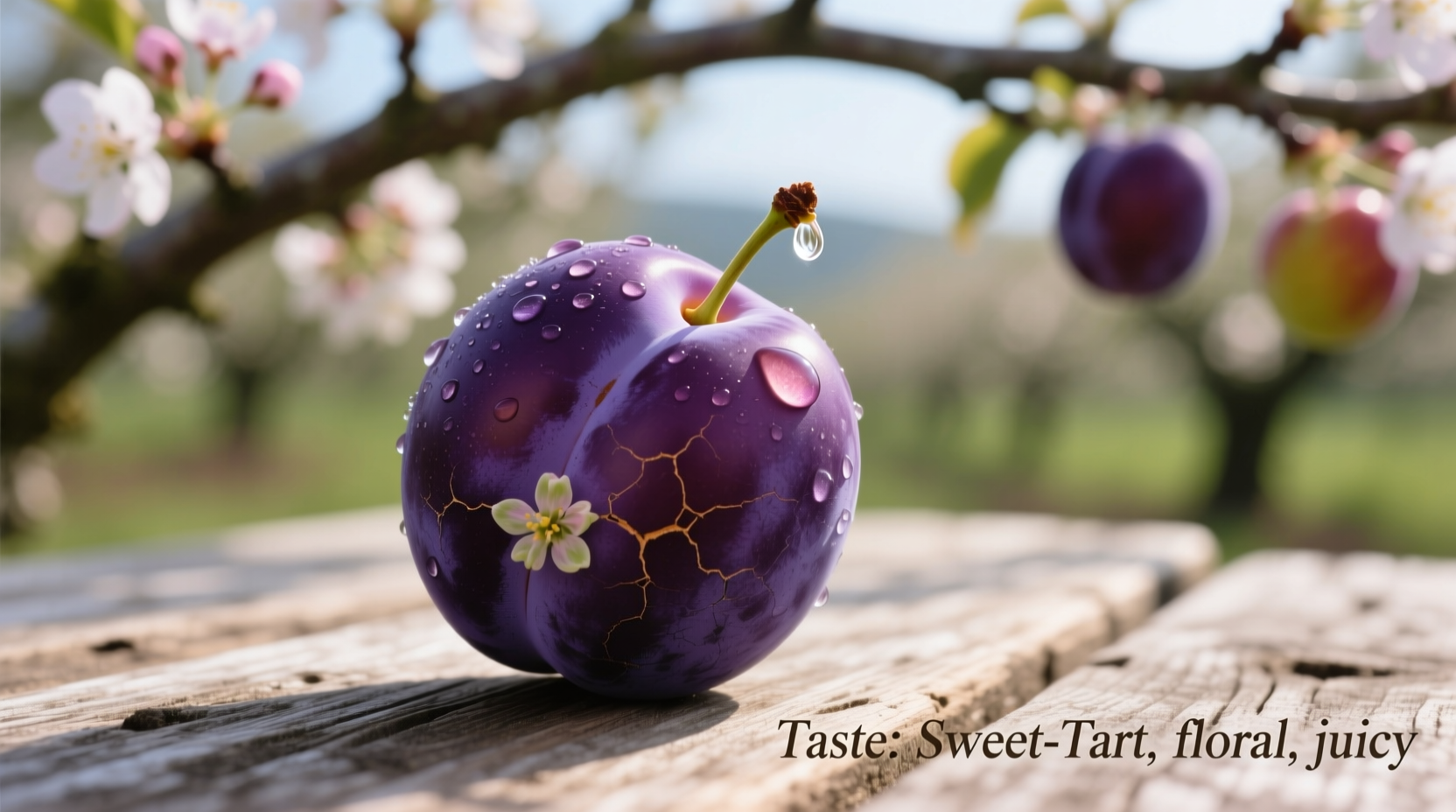Ever wondered what makes plums such a beloved summer fruit? Understanding what do plums taste like helps you select the perfect variety for snacking or cooking. These stone fruits offer a dynamic flavor journey that changes dramatically with ripeness and cultivar.
The Core Plum Flavor Experience
When perfectly ripe, plums present a harmonious blend of sugar and acid that creates their signature taste. The predominant flavor notes include:
- Sweetness - Ranging from mild honey-like notes to intense caramelized sugar flavors
- Tartness - A refreshing acidic kick that balances the sweetness
- Floral undertones - Delicate blossom-like notes varying by variety
- Earthy complexity - Especially in European prune plums
The texture significantly influences the tasting experience. Ripe plums have a succulent, almost buttery flesh that releases juice with each bite. The thin skin contributes subtle tannins that enhance the overall flavor complexity without overwhelming bitterness.
How Different Plum Varieties Taste
Not all plums taste alike. The flavor profile varies considerably across the 2,000+ cultivated varieties. Understanding these differences helps you choose plums that match your taste preferences.
| Plum Variety | Primary Flavor Notes | Sweetness Level | Best Culinary Uses |
|---|---|---|---|
| Japanese Plums (e.g., Santa Rosa) | Berry-like, tropical hints | ★★★★☆ | Fresh eating, salads, grilling |
| European Plums (e.g., Italian Prune) | Wine-like, honeyed, complex | ★★★☆☆ | Baking, preserves, drying |
| Cherry Plums | Bright, citrusy, floral | ★★☆☆☆ | Jams, sauces, garnishes |
| Yellow Plums (e.g., Mirabelle) | Honey, apricot, delicate | ★★★★☆ | Desserts, brandy, fresh eating |
This comparison comes from the University of California's Fruit Research Program, which has documented flavor profiles across hundreds of plum varieties through sensory analysis. Their research confirms that Japanese plums generally offer the highest sugar content, while European varieties develop more complex flavor compounds during ripening.
How Ripeness Transforms Plum Flavor
The taste of plums evolves dramatically as they ripen. This maturation timeline affects both flavor chemistry and eating experience:
- Underripe Stage (firm, greenish hue): High malic acid content creates pronounced tartness with minimal sweetness. Texture is crisp and somewhat astringent.
- Optimally Ripe (slightly soft, full color): Sugar content peaks while acidity mellow. Volatile compounds develop floral and fruity aromas. Texture becomes juicy and tender.
- Overripe Stage (very soft, wrinkled): Natural fermentation begins, creating wine-like complexity with intensified sweetness. Some varieties develop subtle alcohol notes.
According to the University of Minnesota Extension, plums continue producing aromatic compounds for up to 72 hours after harvest, which explains why properly ripened plums taste significantly more flavorful than tree-ripened counterparts picked too early.
Practical Taste Applications in Cooking
Understanding how do plums taste when ripe helps you leverage their flavor in recipes. The natural pectin and acid content make plums incredibly versatile:
- Preserves and Jams - European plums' balanced acidity sets beautifully without added pectin
- Savory Applications - Tart varieties complement duck, pork, and game meats through their natural acidity
- Baking - Ripe Japanese plums maintain structure while releasing flavorful juices
- Raw Preparations - Sliced yellow plums enhance salads with their delicate sweetness
Professional chefs often combine plum varieties to create layered flavor profiles. As Antonio Rodriguez explains, "The secret to maximizing plum flavor profile for cooking is understanding how different varieties contribute distinct notes - like using tart cherry plums for brightness in sauces and sweet Santa Rosas for natural sweetness in desserts."

Selecting the Best-Tasting Plums
Follow these evidence-based tips to choose plums with optimal flavor:
- Seasonality matters - Peak season (May-October depending on variety) delivers maximum sugar development
- Check for slight give - Properly ripe plums yield gently to palm pressure, not finger pressure
- Look for bloom - The natural waxy coating (bloom) indicates minimal handling and freshness
- Sniff test - Ripe plums emit a subtle floral fragrance at the stem end
Remember that what does a ripe plum taste like differs significantly from underripe fruit. Allow firm plums to ripen at room temperature for 2-3 days to develop their full flavor potential. Store ripe plums in the refrigerator to slow further ripening while preserving flavor complexity.
Frequently Asked Questions
Do all plums taste sweet?
No, plum sweetness varies significantly by variety and ripeness. Underripe plums taste predominantly tart, while fully ripe Japanese varieties can reach 18-20 Brix (sugar measurement). European prune plums maintain more balanced sweet-tart profiles even when fully ripe.
Why do some plums taste bitter?
Bitterness typically comes from underripe fruit or the skin. Plums contain tannins that decrease as they ripen. The skin often has higher tannin concentration, which provides complexity in small amounts but can taste bitter if consumed in large quantities, especially in underripe specimens.
How does cooking change plum flavor?
Cooking concentrates plum flavors and transforms their chemical composition. Heat breaks down cell walls, releasing more juice and enhancing sweetness. The Maillard reaction creates new flavor compounds, while natural acids mellow. Tart varieties become pleasantly sweet-tart when cooked, making them ideal for sauces and compotes.
Can you eat sour plums?
Absolutely. Sour plums (like cherry plums) are prized for their high acid content which provides brightness in culinary applications. They're excellent for making shrubs, syrups, and sauces where their tartness balances sweetness. Many traditional European preserves use specifically sour varieties for their flavor complexity.











 浙公网安备
33010002000092号
浙公网安备
33010002000092号 浙B2-20120091-4
浙B2-20120091-4